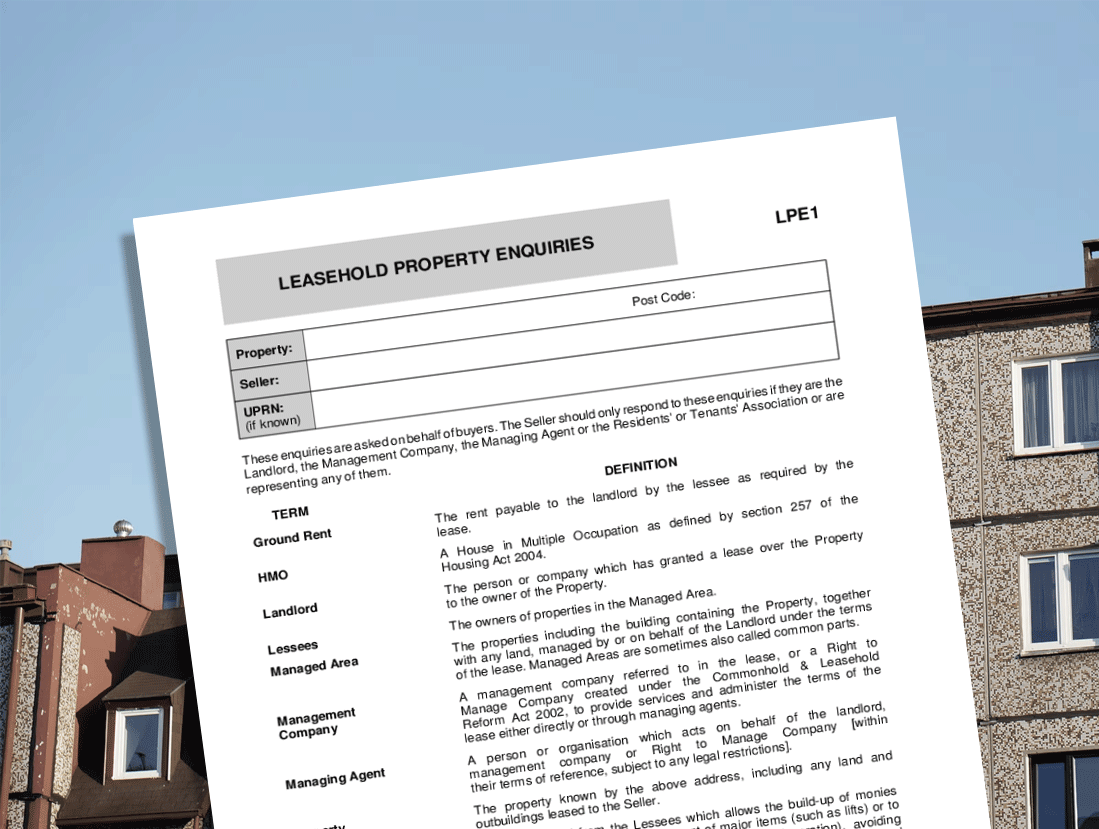A Comprehensive Guide to the LPE1 Form
by Innovus on 30 July 2024

When dealing with leasehold property transactions, the LPE1 form plays a crucial role in providing essential information to all parties involved. At Innovus, we understand the importance of this document in the conveyancing process. This guide will walk you through everything you need to know about the LPE1 form, from its contents to its significance in property transactions.
What is an LPE1 Form?
The LPE1 form, or Leasehold Property Enquiries Form 1, is a standardised document used in the conveyancing process for leasehold properties. It contains vital information about the property, including details about the landlord, managing agents, service charges, and other relevant information about the property being sold.
According to the Law Society, the LPE1 form is an essential part of the leasehold property transaction process. It provides buyers and their conveyancing solicitors with crucial details needed to make informed decisions about the property purchase.
Key Information Contained in an LPE1 Form
The LPE1 form includes a wide range of important information about the leasehold property. As outlined by the Leasehold Advisory Service, some of the key details you’ll find in this document include:
- Contact details of the landlord, management company, and managing agents
- Ground rent and service charge information
- Buildings insurance details
- Information about any notices served
- Details of any anticipated excess payments due
- Requirement for a deed of covenant
- Information about ongoing disputes or proceedings
- Details of any major works planned for the property
This comprehensive collection of information helps to ensure that all parties have a clear understanding of the property’s status and any potential issues or costs associated with it.
Who Needs an LPE1 Form?
According to the HM Land Registry, the LPE1 form is primarily required by:
- Buyers of leasehold properties
- Conveyancing solicitors representing buyers
- Mortgage lenders
These parties rely on the information provided in the LPE1 form to assess the property’s condition, potential liabilities, and overall suitability for purchase.
Who Completes the LPE1 Form?
The Royal Institution of Chartered Surveyors (RICS) states that the responsibility for completing the LPE1 form typically falls to the landlord or the managing agent of the leasehold property. In some cases, particularly for smaller developments, the current leaseholder (seller) may need to gather the required information from various sources to complete the form.
It’s worth noting that the Leasehold Advisory Service recommends that whoever completes the form should do so with care and accuracy, as providing incorrect information could lead to legal issues later on.
Costs Associated with the LPE1 Form
The cost of obtaining an LPE1 form can vary depending on the landlord or managing agent. According to the HomeOwners Alliance, the seller is typically responsible for paying this fee, which can range from £200 to £500. It’s important to factor this cost into the overall expenses associated with selling a leasehold property.
The Importance of Accuracy in LPE1 Forms
The Conveyancing Association emphasises that accuracy in completing the LPE1 form is paramount. Providing incorrect or misleading information can have serious consequences, including:
- Delays in the conveyancing process
- Potential legal action against the landlord or managing agent
- Issues for the buyer post-completion
To ensure accuracy, it’s advisable to seek professional assistance when completing the form. At Innovus, our experts can guide you through this process, ensuring all information is correct and up-to-date.
LPE1 Form and the Building Safety Act 2022
The Building Safety Act 2022, as explained by the UK Government, has introduced new requirements that affect leasehold properties. The LPE1 form now includes questions related to this act, such as:
- Whether a Deed of Certificate has been served on the landlord
- If the landlord has responded with a Landlord’s Certificate
- Any outstanding enforcement action related to building safety
These additions reflect the increased focus on building safety in the wake of recent events and legislation changes.
Common Issues with LPE1 Forms
The Property Ombudsman highlights some common problems that can arise with LPE1 forms, including:
- Delays in obtaining the completed form
- Incomplete or inaccurate information
- Disputes over the fees charged for providing the form
- Difficulties in obtaining information for properties with absent freeholders
These issues can cause significant delays in the conveyancing process. Working with experienced professionals can help mitigate these problems and ensure a smoother transaction.
The LPE1 form is a critical document in leasehold property transactions, providing essential information to buyers, solicitors, and lenders. Understanding its contents and ensuring its accuracy is crucial for a smooth and successful property transaction.
If you’re dealing with a leasehold property transaction and need assistance with the LPE1 form or any other aspect of the process, don’t hesitate to contact Innovus. Our team of property experts is here to guide you through every step of leasehold transactions, ensuring a smooth and confident experience.

